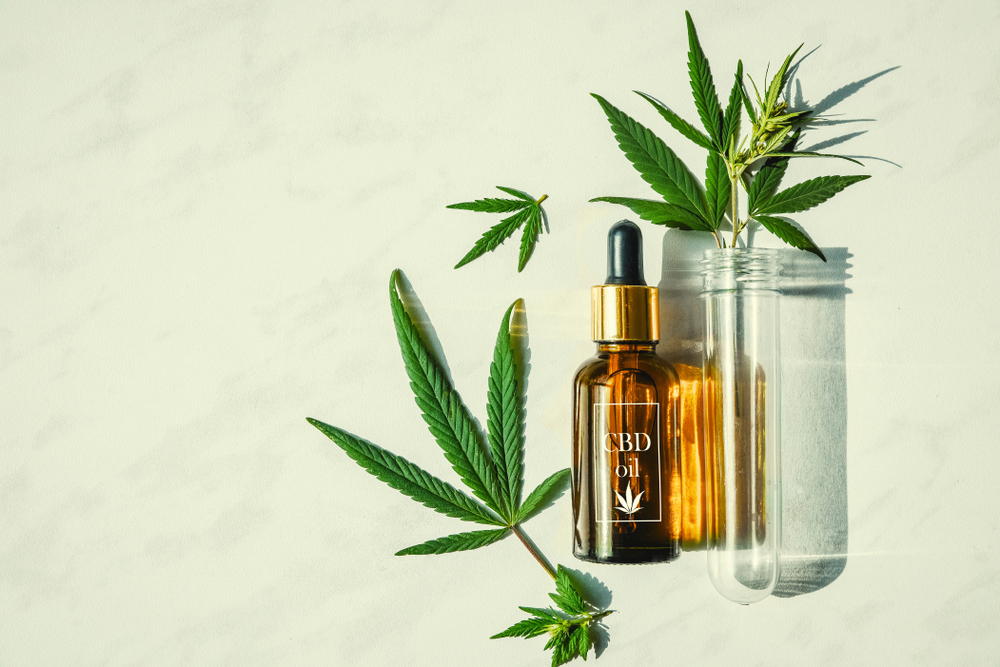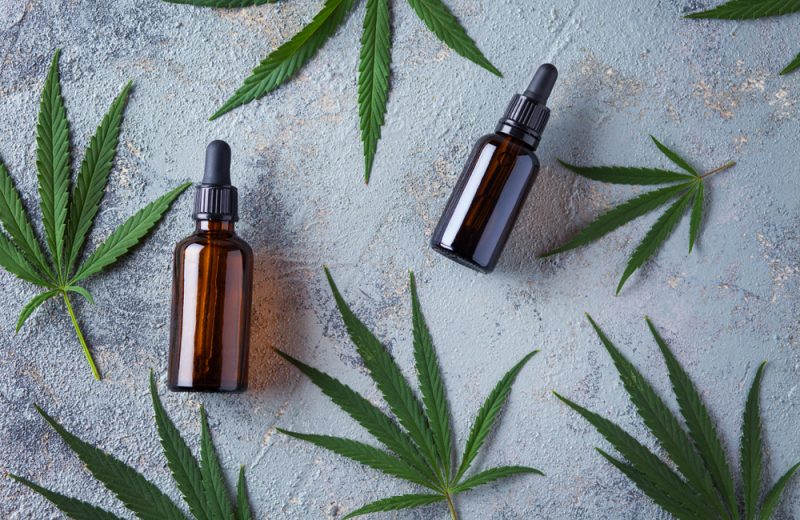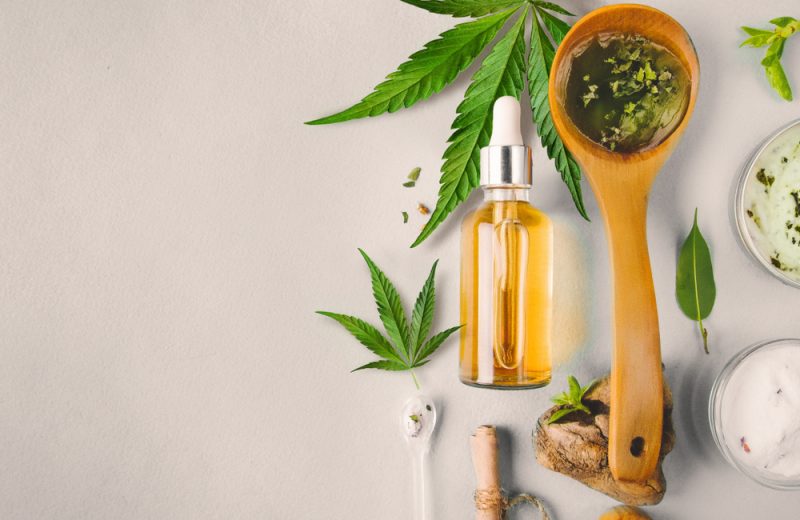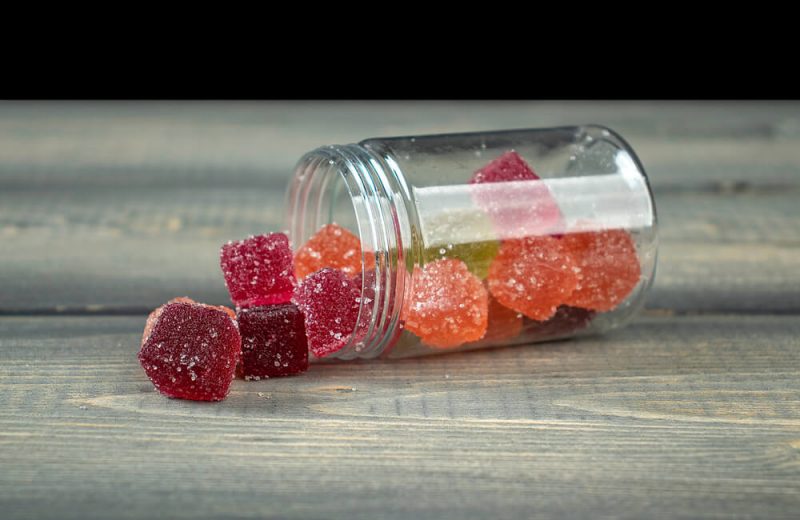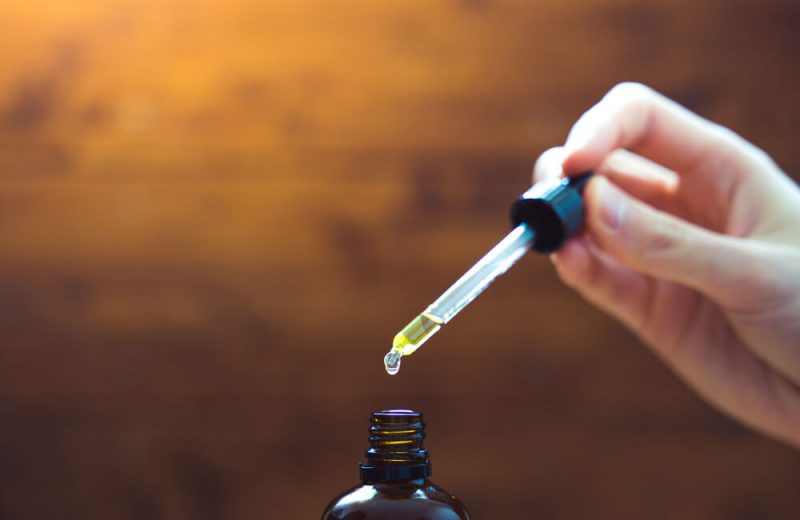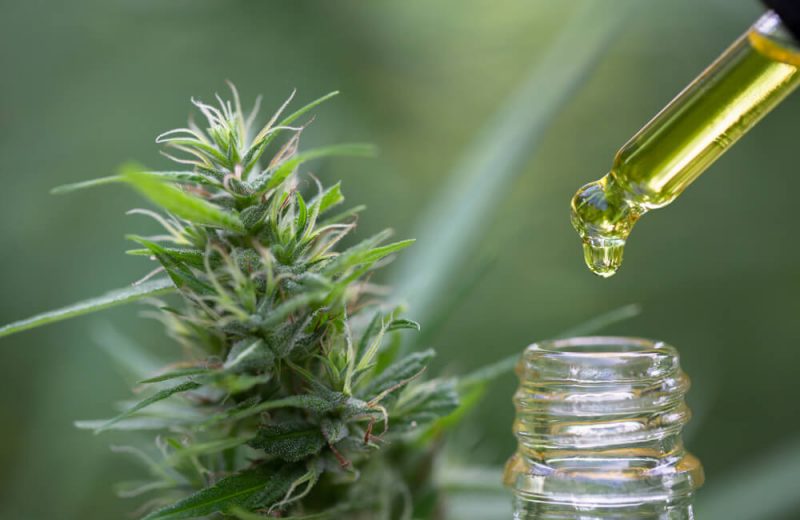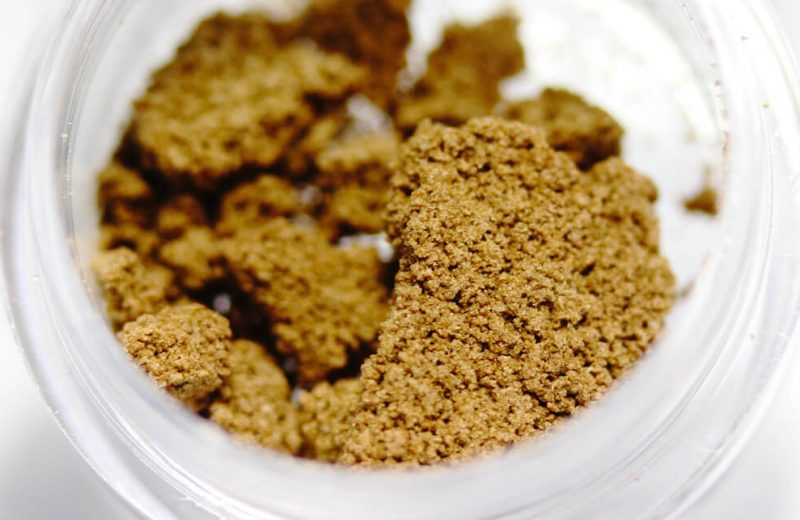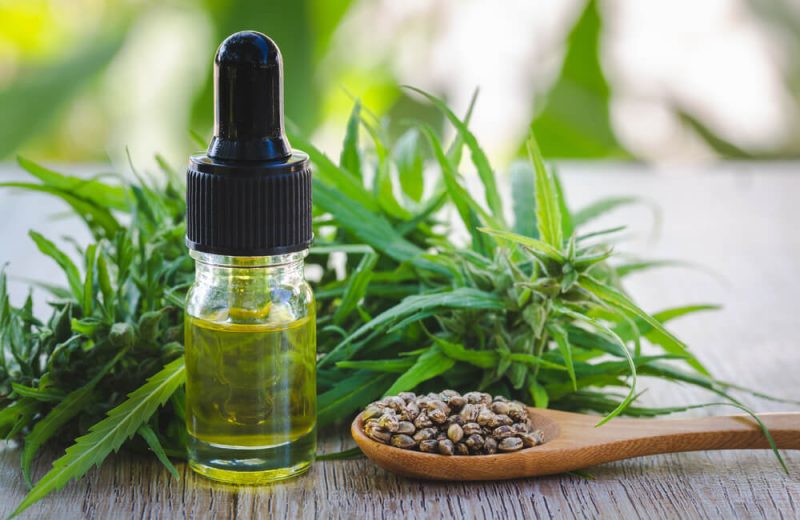CBD is touted as a treatment for everything from cancer to depression. So is CBD for diabetes really about to join them?
There’s no cure for diabetes. This makes the diagnosis particularly vexing, considering the key effect of the condition—elevated blood sugar—has a long and scary list of symptoms and long-term impacts. Prolonged high blood sugar can lead to stroke, nerve damage, heart disease, kidney disease, blindness, tooth loss, and more. Some of these symptoms can be life-threatening, and the cumulative effect of uncontrolled diabetes can be lethal.
In the absence of a cure, the treatment of diabetes revolves around managing the symptoms and taking steps to do what the diabetic body can’t do naturally—keep the blood sugar within healthy parameters.
It’s no wonder people turn to CBD for diabetes. While the health benefits of ingesting CBD oil remain hypothetical, promising early test results to tease at the promise of the THC-free cannabis extract to provide relief for any number of conditions. Could diabetes be one of them?
In this guide, we discuss:
- The different forms of diabetes.
- What CBD is.
- Ways in which CBD might help diabetics.
- Ways in which CBD might harm diabetics.
- Different ways of taking CBD and what diabetics should look for.
First thing’s first: What Type of Diabetes are we Dealing With?
When considering the effectiveness of CBD for diabetes, it helps to know which kind of diabetes we’re talking about. Diabetes isn’t one condition, but a collection of related conditions. High blood sugar is a unifying factor, but the cause of the high blood sugar, as well as the conditions of the onset, vary from type to type.
Type I Diabetes
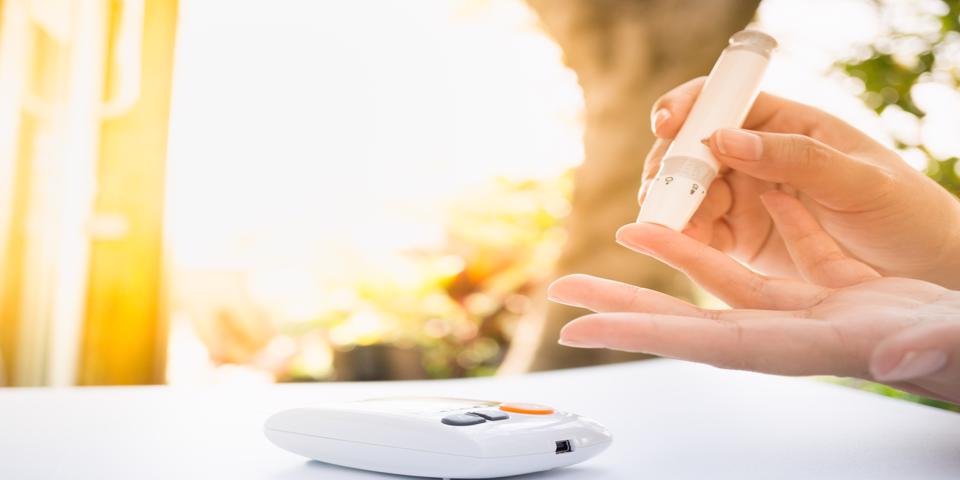
About 1.25 million Americans live with type I diabetes (T1D), with about 40,000 new cases diagnosed per year in the US alone. This chronic condition was once referred to as “juvenile diabetes,” since the disease usually makes its presence known in childhood.
In healthy bodies, a pear-shaped endocrine/exocrine gland called the pancreas produces various hormones from its position next to the stomach. One of those hormones, insulin, enters the bloodstream and promotes the cells’ absorption of carbohydrates, including the simple sugar glucose. It also inhibits the liver from producing and secreting excess glucose.
In cases of type I diabetes, the pancreas produces little or no insulin. As a result, glucose is not absorbed from the blood efficiently, and the liver over-produces glucose, pushing blood sugar levels even higher.
The exact cause of this form of diabetes, called “insulin-dependant diabetes,” is not well understood. It may have a genetic component, as well as a possible connection to some viral infections. Whatever the cause, the effect is the destruction of pancreatic beta cells, responsible for producing the insulin, through an autoimmune response in the body. This creates type I diabetes.
Treatment of the condition usually involves insulin therapy, along with diet and lifestyle management to prevent long-term complications of high blood sugar.
Without insulin treatment, patients will face the rapid onset of life-threatening complications like diabetic ketoacidosis or nonketotic hyperosmolar coma. Patients must be careful not to overdose on insulin, lest they suffer negative effects from low blood sugar.
Type II Diabetes
Between 27 and 29 million of the 30 million diabetics in the United States have type II diabetes (T2D).
The nations of Egypt, Saudi Arabia, and Georgia suffer from the highest rates of type II diabetes, while poor regions of Saharan and sub-Saharan Africa enjoy the lowest rates of type II diabetes. The United States and much of the developed world sit in the middle of the pack in an exploding T2D epidemic.
This condition used to be called “adult-onset diabetes,” due to the fact that almost no children exhibited the condition and it was most commonly diagnosed in adults over the age of 45.
However, more and more children are presenting with type II diabetes, rendering the traditional moniker a misnomer. This change in the patient profile of T2D is widely attributed to the health crisis of juvenile obesity, T2D being a common consequence of obesity.
Type 2 diabetes may have several underlying causes. Inflammation of the pancreas may diminish its ability to produce insulin. Inflammation may also render the cells resistant to insulin, inhibiting their ability to absorb glucose from the blood.
As mentioned, obesity and lack of exercise are a primary factor in the onset of T2D. Increased obesity rates and increasingly sedentary lifestyles have corresponded with an exponential increase in the diagnosis rates of T2D. In 1985, roughly 30 million people worldwide were living with type II diabetes. By 2015, that number had ballooned to 392 million people.
Symptoms of T2D include frequent urination, thirst and hunger, sores that don’t heal, and fatigue. Most alarmingly, type II diabetes correlates with a ten-year decrease in life expectancy.
Like T1D, no cure exists for T2D, but diet and exercise can help manage the symptoms. The patient may require insulin therapy and require regular monitoring of blood sugar. The medication metformin may help regulate blood sugar, as can bariatric surgery (weight loss surgery).
Gestational Diabetes
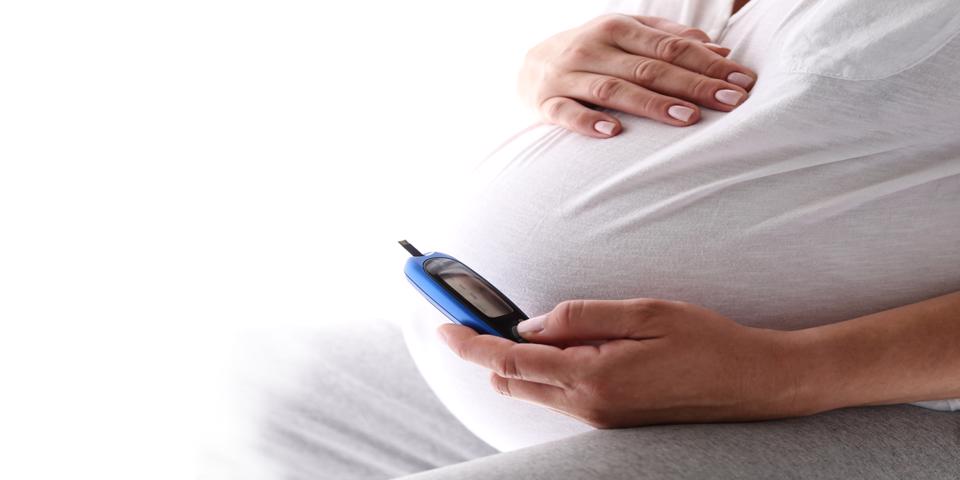
Gestational diabetes is an elevated blood sugar condition that presents in some pregnant mothers. There is a “cure” to this form of diabetes — the birth of the child. After childbirth, the condition usually subsides, and 90% of patients revert to proper blood sugar regulation, although they do face an increased risk of developing type II diabetes after the pregnancy.
Gestational diabetes typically presents in the second or third trimester, but can occur in the first trimester. Despite its tendency to subside after giving birth, gestational diabetes can result in serious complications if undiagnosed or not properly managed.
Pregnant women with gestational diabetes face an increased risk of depression, pre-eclampsia, or the necessity of delivery by Cesarean section. The baby could have high birth weight, jaundice, low birth blood sugar, or in extreme cases be stillborn. The baby will also face an increased risk of childhood obesity and the early onset of T2D.
Overweight women are at greater risk of developing gestational diabetes, as are women with polycystic ovarian syndrome. Pregnant women should be screened for the condition via blood test between 24 and 28 weeks. If diagnosed with gestational diabetes, she may require exercise, a diabetic diet, and insulin therapy. Doctors recommend that the mother breastfeed the baby as soon as possible after birth.
Between 6% and 9% of all pregnant women develop gestational diabetes, while between 1% and 2% of pregnant women have T1D or 2D. Instances of gestational diabetes increased by 56% between the years 2000 and 2010, while the percentage of pregnant women with T1D or T2D has increased by 37%.
CBD and Type I Diabetes
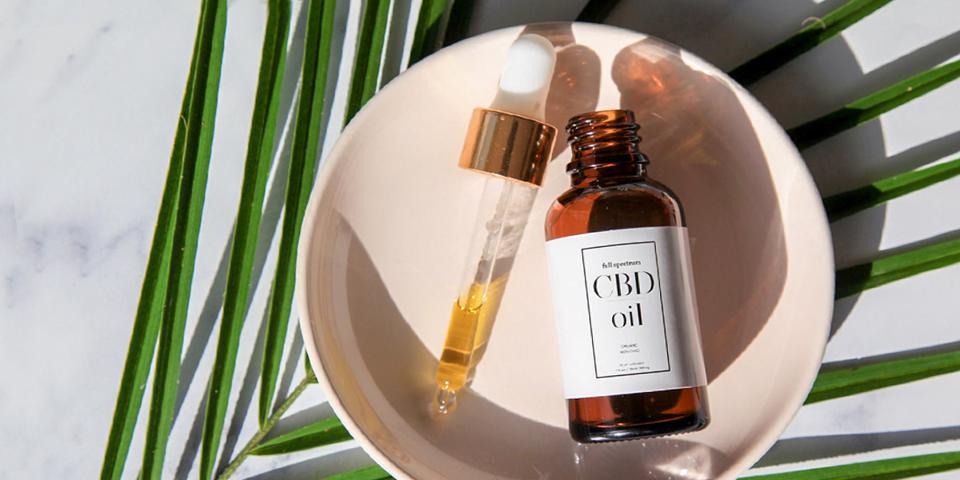
Before we dig in, the basics—CBD is short for cannabidiol. It is one of many compounds, known as cannabinoids, found in the various species of the cannabis plants, including marijuana and hemp.
While marijuana remains illegal on the Federal level in the US, hemp is widely used in the industrial, cosmetic, and dietary industries. Hemp contains very little THC, the psychoactive cannabinoid abundant in marijuana. CBD does not get you high and is legal to be produced and sold in most US states, provided that it is extracted from industrial hemp and contains less than 0.3% THC by volume.
How does this apply to T1D? Type I diabetes is an inflammatory disease. One of the key uses of CBD is to reduce inflammation. The anti-inflammatory properties of CBD are not confirmed or well understood and require further testing. Still, taking CBD for diabetes may make sense in that respect.
Another property of cannabinoids is their interaction with the endocannabinoid system, a system of receptors located on cell membranes that allow various chemicals to bind to them and affect cellular function. The body actually produces its own cannabinoids naturally, which bind to the endocannabinoid receptors.
The endocannabinoid system is believed to play a key (albeit ill-understood) role in maintaining the body’s internal homeostasis (internal balance). Insulin production and uptake, and insulin’s subsequent impact on blood sugar levels, are a key component of body homeostasis. Scientists suspect the endocannabinoid system may play a role in both, meaning stimulation of the endocannabinoid system can change how the body responds to insulin or regulates glucose levels.
THC, which a person may ingest by consuming marijuana, binds directly to endocannabinoid receptors. However, CBD does not bind to endocannabinoid receptors, meaning it does not have a direct effect on how the endocannabinoid system functions.
However, CBD has demonstrated the ability in early testing to help the body regulate the production of its own cannabinoids, indirectly affecting the system.
Patients with T1D typically don’t have a problem with insulin uptake; it’s the production of insulin in the pancreas where their body is deficient.
Type 1 diabetics, therefore, must exercise caution. CBD has an indeterminate effect on insulin uptake. Anecdotally, some patients have exhibited reduced blood glucose; others have seen it spike. If CBD winds up inhibiting the uptake of insulin, a patient’s insulin therapy could be undermined, risking the dangerous complications of acute insulin deficiency, including ketoacidosis and coma.
However, CBD is not proven to have permanent or deleterious side effects, nor has a direct or predictable impact been observed on blood sugar levels. The danger of treating type I diabetes with CBD is considered to be quite low. Patients should monitor their doses and blood sugar levels, and consider taking CBD and insulin doses at separate times. As always, consulting one’s physician is important.
CBD and Type II Diabetes
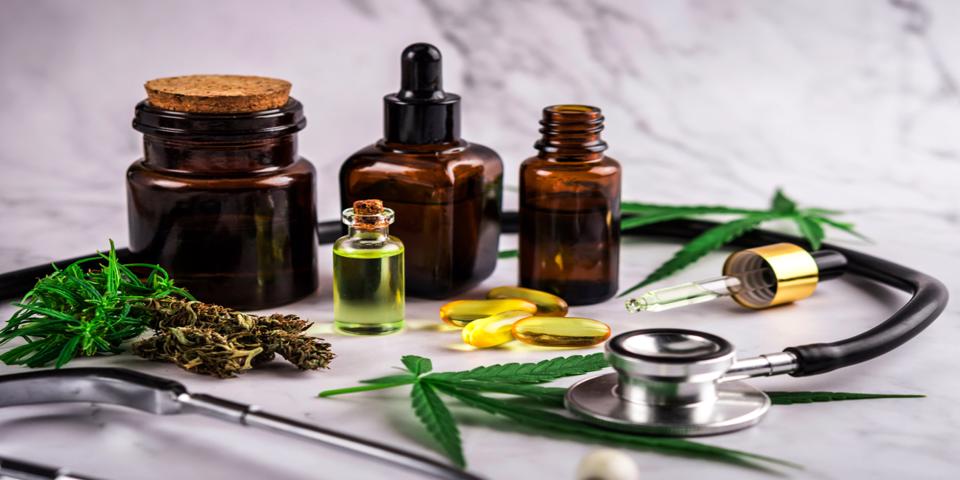
Initial studies showed that CBD oil helped reduce the occurrence of type II diabetes in mice. Specific beneficial effects on the mice included:
- A reduction of high blood sugar (hyperglycemia).
- Increased insulin production.
- Lowered HDL cholesterol (aka “bad” cholesterol).
- Less swelling, pain, and nerve damage.
- Increased brown fat, also known as “good fat” or “slimming fat.”
However, remember that these were animal trials. CBD as a preventative measure for T2D in humans is not proven.
As mentioned before, however, the endocannabinoid system may play a role in the body’s ability to use insulin. Whereas most T1D patients have no inhibition of insulin uptake, T2D patients do. Patients with type II diabetes may notice changes in their blood sugar levels after starting a regimen of CBD.
Will the blood sugar go up or down? Anecdotal evidence is split, with some patients noticing an uptick of blood glucose levels, others noticing a decline in blood glucose levels. If a patient notices a spike in blood sugar levels, (s)he should discontinue the use of CBD.
The anti-inflammatory properties of CBD may provide relief for other T2D symptoms. Additionally, CBD has demonstrated analgesic properties anecdotally and in early trials. CBD may be an effective treatment for diabetes-related pain.
CBD has no direct documented effect on blood glucose, nor does it affect other types II diabetes vectors like HDL cholesterol levels.
It should be noted, however, that a variation of THC did improve human patients’ blood glucose and lipid profiles. Again, these are early results that require further testing.
Products containing THC remain illegal at the Federal level, categorized as Schedule I Narcotics in the same category as heroin and cocaine. However, prosecutions at the Federal level remain rare, and many US states have legalized THC for medical and/or recreational use, offering marijuana and other THC-laden products in dispensaries or drug stores.
In “medical marijuana” states (North Dakota, Ohio, Minnesota, and New York, for example) you need a prescription. In “recreational marijuana” states (California, Colorado, Washington, and Vermont, for example), you do not need a prescription.
It shouldn’t be forgotten that lifestyle factors play a key role in a patient’s risk of developing type II diabetes, as well as managing symptoms and preventing complications. Diet and exercise are the obvious arenas where huge differences can be made, to good effect on patients.
Some patients find a regimen of CBD oil helpful in regulating appetite and the sleep cycle. It may also ease the pain and fatigue associated with an active lifestyle. If CBD oil enables a patient to live a healthier lifestyle, it could have an indirect net-positive effect on their risk of developing or ability to manage type II diabetes.
As mentioned before, the interaction between CBD and insulin therapy is unknown. So, too, is the interaction between CBD and metformin, the medication commonly prescribed to type II diabetics to manage the condition. These interactions should be monitored closely. At any sign of issues, the regimen of CBD should be discontinued.
CBD and Gestational Diabetes
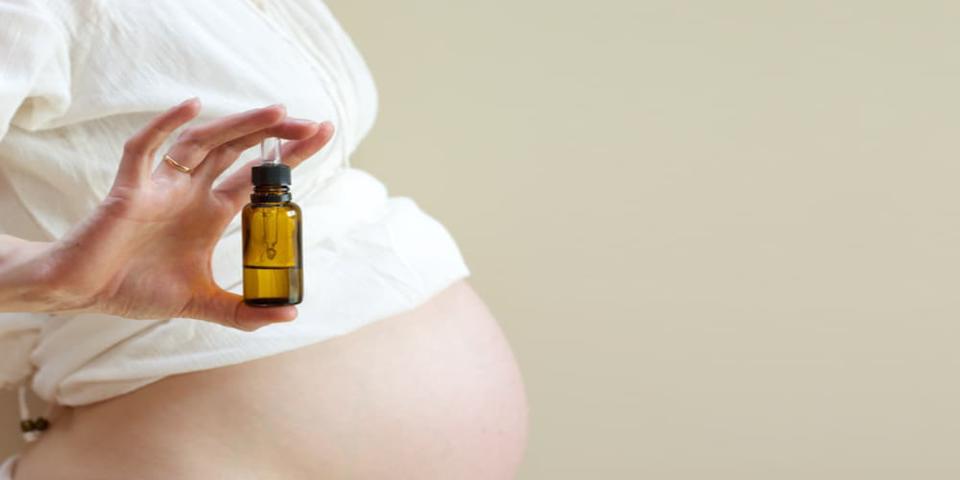
CBD might have similarly useful effects on the symptoms of gestational diabetes as it does on other forms of diabetes. The documented mood-balancing effects of CBD may help with depression linked to gestational diabetes. However, in cases of gestational diabetes, the effect on the fetus must be taken into account.
Treating gestational diabetes with CBD has one big downfall in the form of the FDA, which recommends that pregnant mothers abstain from ingesting CBD, THC, and other cannabidiols.
The Surgeon General also strongly advises against THC for pregnant mothers but does not mention CBD. It should be noted that THC crosses the blood-brain barrier from the mother’s blood to the fetus’ brain, increasing the risk of low birth weight, premature birth, and even stillbirth. THC can also be present in breast milk days after ingestion.
However, the actual impact of CBD on an unborn fetus is under-studied. The FDA continues to gather data on the impact of CBD on fetuses. High doses of CBD have caused problems in pregnant animals, but human trials have been inconclusive.
CBD probably enters the fetal brain and exists in breast milk after consumption, but CBD experts deny that it has any age-dependent harmful effects, insisting that it is safe for infants. However, many pregnant mothers may prefer a better-safe-than-sorry approach and abstain from CBD for gestational diabetes.
How to Take CBD with Diabetes
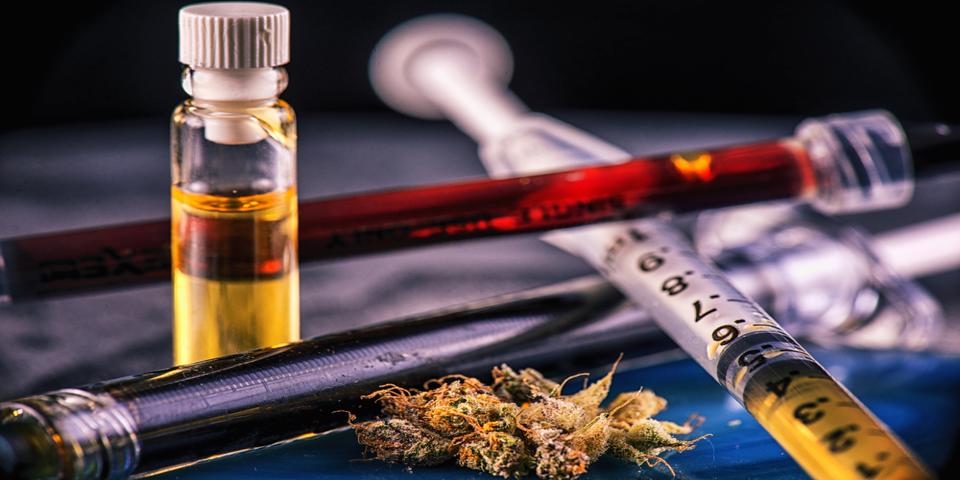
A CBD regimen can be taken in a number of different forms. Note that certain special considerations apply to CBD dosage for diabetics, mostly related to the sugar content of the medium.
Regardless of the method of ingestion, diabetics, like all CBD users, should look for a full-spectrum or other high-quality CBD extract from organic hemp, containing natural agents and as few additives as possible.
Common side effects include drowsiness, fatigue, diarrhea, and dry mouth, all of which wear off after the regimen has been discontinued. If your dose of CBD produces any of these symptoms, try a smaller dose or consider discontinuing the regimen and seeking other treatment options.
Tinctures
What many people think of as “CBD oil” is often actually a tincture. A tincture is a concentrated extract mixed with water and/or alcohol. CBD tinctures are typically blended with 60-70% alcohol. It is minimally viscous and usually comes with a dropper. CBD tinctures may be available in drug stores, grocery stores, dispensaries, specialty stores, and online.
Using the dropper, the tincture can be dropped under the tongue or dripped into food or a beverage to be absorbed in the gut. The mixture of alcohol and water allows the compound to be absorbed quickly and enter the bloodstream.
Users with a sensitivity to alcohol may not prefer a CBD tincture. However, it remains one of the easiest ways to ingest CBD orally. Tinctures also have a long shelf life, making them easy to buy in bulk.
A CBD tincture contains little or no sugar, meaning there are few special considerations for diabetics to consider when taking CBD for diabetes.
Oils
The “oil” in CBD oil may refer to a hemp oil suspension containing CBD extract. Viscous like other plant-based oils, a CBD suspension in hemp oil may also be taken orally or used as a topical treatment. CBD oils may be available in drug stores, grocery stores, dispensaries, specialty stores, and online.
Hemp oil, a natural oil derived from hemp seeds, has its own healthful properties, including antioxidants. Despite the fact that they come from the same species of plant, hemp oil is not the same thing as CBD oil and contains no actual CBD, which some unscrupulous hemp-oil peddlers try to obfuscate to take advantage of the booming CBD demand. Beware of “greenwashing!” Check for “cannabidiol” on the ingredient list.
Neither CBD nor hemp oil contains sugar, making it safe for blood sugar levels. However, hemp oil does contain lipids, which some type II diabetics may want to avoid.
Topicals
Topical creams, oils, and lotions containing CBD can be purchased over-the-counter. Topical CBD may be the way to go for diabetes-related aches, sores, and inflammation.
CBD topicals may be available in drug stores, grocery stores, dispensaries, cosmetics stores, specialty stores, and online.
Edibles and Capsules
CBD oil can be encased in capsules for slow-release gut absorption. CBD capsules may be available in drug stores, dispensaries, grocery stores, specialty stores, and online.
CBD can also be included in edibles, like pastries or candies. You can find CBD edibles in smoke shops and some specialty stores. Beware of the sugar content of edibles when considering CBD for diabetes. Eating food high in sugar may lead to blood glucose spikes, which can have short-term and long-term negative effects on diabetics. Look for CBD edibles that fulfill the requirements of a diabetic diet.
Beverages
CBD beverages are available in cans or other receptacles, both flat and carbonated, for oral consumption and gut absorption. CBD beverages may be available in drug stores, smoke shops, dispensaries, specialty stores, and online.
As with most beverages, diabetics need to be careful of the sugar content of their beverages. Choose a beverage low in sugar to avoid a blood glucose spike. Diabetics should stick to CBD beverages that conform to the requirements of a diabetic-friendly diet.
Vaping
“Vaping” is a popular method of CBD consumption that involves inhaling vaporized CBD oil through the lungs. It is one of the fastest ways to absorb CBD into the bloodstream. A heating element is used to vaporize the CBD oil, from which it can be inhaled.
CBD vape oil usually comes in a cartridge, which gets attached to a battery and used as a handheld, portable vaporizer or “e-cigarette.” Powerful desktop vaporizers can also be deployed to vaporize CBD into a potent vapor. CBD oil vape cartridges, batteries, and vaporizers can be purchased online, at smoke shops, or other specialty stores.
It should be noted that inhaling vape chemicals is a relatively new practice, and serious health concerns loom on the horizon for long-term vapers. Of particular concern to diabetics, vaping may cause damage to the lungs, possibly impeding a diabetic’s ability to maintain a diabetes-friendly exercise regimen. Vaping is contra-indicated for pregnant women.
Lung problems associated with vaping include coughing and shortness of breath. Weight loss, diarrhea, and nausea have also been linked to vaping.
What can CBD Mean for Diabetic Users?
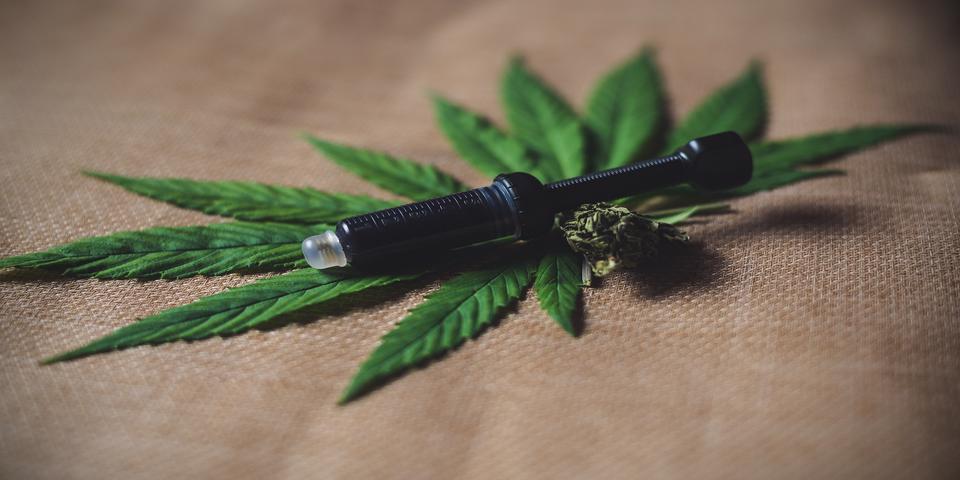
Diabetes has earned a place alongside cancer and HIV among diseases that could really use a “miracle cure.”
While treatments exist to manage it, while diabetics can and do lead long and productive lives, treatments are cumbersome and costly. Diabetics find their lifestyles curtailed by strict diets, exercise, and treatment regimens. Over the long term, diabetes is a harbinger of suffering and early death for millions.
CBD is sometimes touted as a “miracle cure” in its own right, showing promise as a treatment for cancer, seizure disorders, autoimmune disorders (of which type I diabetes is one), pain, mood disorders, and many more. Diabetics who struggle with the consequences of the diagnosis may be tempted to regard it as such.
Nevertheless, as a miracle cure, CBD has a long way to go. Some early test results have shown promise; others have been inconclusive. Much of the word of mouth around CBD is based on anecdotal evidence, which is considered unreliable evidence in medical science. The fact that someone’s brother’s daughter-in-law’s hairstylist took CBD oil and their blood sugar stabilized overnight is encouraging, but not a statistically significant scientific result.
While the science is being done, however, CBD is legal, widely available, and popular, a beneficiary of increased social acceptability. Harmful side effects hover between rare and non-existent. There’s no real reason not to try CBD for types 1 and 2 diabetes. It may boost morale to feel like you are doing something.
Moreover, all signs point to the conclusion that this particular “something” may be good for you. Just keep in mind several special considerations that apply to diabetics:
- Diabetics should not ingest edible or drinkable CBD products that contain sugar. Ingesting too much sugar could cause a harmful blood-glucose spike.
- Diabetics should not ingest CBD in a fashion that could harm the lungs or impede their ability to exercise and maintain a healthy, active lifestyle.
- Women with gestational diabetes should carefully consider the FDA warnings about consuming CBD while pregnant.
- Since the interactions are unknown, diabetics should exercise caution when taking CBD in conjunction with insulin and other prescribed medications.
- CBD treatment is no substitute for prescribed therapies like insulin and metformin, nor is it a substitute for a healthy diet and exercise regimen.
The current verdict on CBD oil is one of cautious optimism. Only legalized recently, CBD trials are still in their infancy. The trendiness of CBD should also never drown out the demonstrated effectiveness of other over-the-counter supplements—notably Vitamin D—to help manage diabetes and lower diabetic markers.
But when we’re talking about diabetes, hope is never a bad thing. The effectiveness of CBD for diabetes is something worth hoping for.




